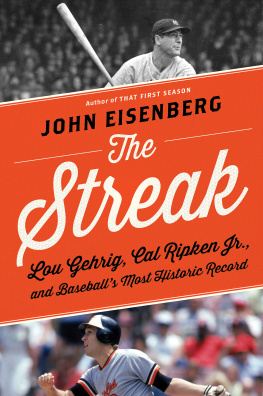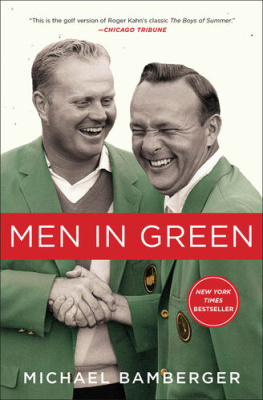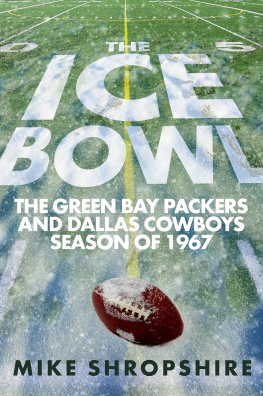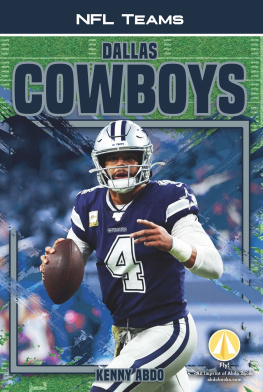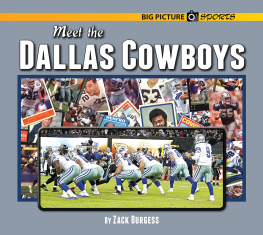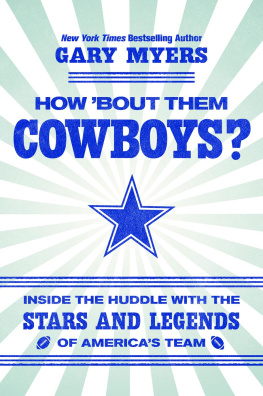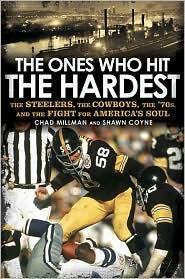Breakthrough
Boys
The Story of the 1971 Super Bowl
Champion Dallas Cowboys
Jaime Aron

For Dorita and Hertzel, Marlene and Ron
First published in 2011 by MVP Books, an imprint of MBI Publishing Company and the Quayside Publishing Group, 400 First Avenue North, Suite 300, Minneapolis, MN 55401 USA
2011 MVP Books
Text 2011 Jaime Aron
Photo copyrights as indicated with individual photo captions.
All rights reserved. With the exception of quoting brief passages for the purposes of review, no part of this publication may be reproduced without prior written permission from the Publisher.
The information in this book is true and complete to the best of our knowledge.
All recommendations are made without any guarantee on the part of the author or Publisher, who also disclaims any liability incurred in connection with the use of this data or specific details.
This publication has not been prepared, approved, or licensed by the Dallas Cowboys or the National Football League.
We recognize, further, that some words, model names, and designations mentioned herein are the property of the trademark holder. We use them for identification purposes only. This is not an official publication.
MVP Books titles are also available at discounts in bulk quantity for industrial or sales-promotional use. For details write to Special Sales Manager at Quayside Publishing Group, 400 First Avenue North, Suite 300, Minneapolis, MN 55401 USA.
To find out more about our books, visit us online at www.mvpbooks.com.
ISBN-13: 978-0-7603-4039-4
Digital Edition: 978-1-61059-740-1
Softcover Edition: 978-0-76034-039-4
Library of Congress Cataloging-in-Publication Data
Aron, Jaime.
Breakthrough boys : when the Dallas Cowboys went from next years champions to
Americas team / Jaime Aron.
p. cm.
ISBN 978-0-7603-4039-4 (hb w/ jkt)
1. Dallas Cowboys (Football team)--History. I. Title.
GV956.D3A75 2011
796.33264097642812--dc22
2011010553
Editor: Adam Brunner
Design manager: Brenda C. Canales
Book designer: Helena Shimizu
Cover designer: Diana Boger
Front Cover Photo Credit: AP Images
Printed in the U.S.A.
Contents

Introduction
B OB LILLY COULDNT TAKE IT ANY MORE . Another season was about to end with a loss, another championship opportunity missed. Only this time the Dallas Cowboys blew it in the final game, the Super Bowl. And they pretty much gave it away.
Lillys rage and frustration got the best of him after a 32-yard field goal put the Baltimore Colts ahead 1613 with five seconds left in the deciding game of the 1970 NFL season. In one motion, he pried off his helmet, cranked his left arm, and hurled his headgear high and farnearly 50 yards by the time it stopped tumbling across the artificial turf, the padding and chin strap unable to last the whole ride.
The game wasnt done, though. The Cowboys downed the kickoff at the 40-yard line and had one last snap.
Understudy Roger Staubach watched from the sideline as hed done all afternoonsince early October, reallyas starting quarterback Craig Morton called out the signals. Morton dropped back and threw deep, hoping for something to finally go his way this afternoon. His pass was caught, all right, but by Baltimore safety Jerry Logan. Super Bowl V was finished now, and the Dallas Cowboys still hadnt won the big one.
What was it about this franchise?

Nowadays, the Dallas Cowboys are Americas Team, the NFLs flagship franchise. Regardless of how many games they win, the Cowboys remain TV darlings and merchandising mavens. With shimmying cheerleaders who are an international sensation in their own right, this club seems to have been born with a silver-and-blue spoon in its mouth.
Only thats not true. Not even close.
The Cowboys got off to the sorriest start imaginable. Their first offices were inside an auto club. This football team practiced at a condemned baseball stadium with varmints crawling around the locker room. Home games were played at another old stadium, and they shared it with a team from a rival league.
They joined the NFL too late to take part in that seasons college draft, so the initial lineup was filled with players other teams didnt want. No surprise then that they didnt win a single game that year. Losing records continued for three, four, five seasons. When fans became restless and wanted a new coach, the owner gave his man a 10-year contract extension. Oh well. It was his moneyand he was losing plenty of it.
Progress came in the sixth year. They broke even in the standings and on the financial ledger. They also finally made the postseason, a battle of runners-up called the Playoff Bowl. Giddy just to be there, they lost 353.
This pushed the franchise into the next phase of its evolution. The Cowboys were about to become one of the best teams in the NFL.
They just couldnt become the best.
In 1966 and 67, they lost the games that wouldve sent them to the first two Super Bowls. The first time, they were wide-eyed overachievers who showed how far theyd come by taking the venerable Green Bay Packers down to the final minutes. The second time was a rematch known as the Ice Bowl. Primed to knock off the mighty champs, the upstarts faced a kickoff temperature of minus 13, with a wind chill of 40 below. They lost on a quarterback sneak in the final minute.
You can tell the real Cowboys, Coach Tom Landry said. Theyre the ones with the frozen fingers and broken hearts.
No expansion team had become so good, so fast. But after the Cowboys got bounced from the playoffs in the first round the next two seasons, they headed into the 1970s saddled with a reputation as under-achievers. They were no longer a growing power. Other up-and-coming clubs soared right past the Cowboys.
The Minnesota Vikings began a year after the Cowboys but made it to Super Bowl IV.
The New York Jets started in the rival American Football League the same year the Cowboys debuted in the NFL and won Super Bowl III.
The Kansas City Chiefswho began in 1960 as the Dallas Texans, the club that shared the Cotton Bowl with the start-up Cowboysplayed in the first Super Bowl and won Super Bowl IV.
The success of the Chiefs was a huge slap in the face for Cowboys fans, leaving them feeling as if theyd backed the wrong horse. In the stands at Super Bowl IV, someone hung a banner that read, Come home, Dallas Texans.
In 1970, the Cowboys seemed to be moving in reverse. After all those years of climbing, they were sliding back down.
On the Sunday before Thanksgiving, they were 54, stuck in third place in their division. Theyd been spanked 5413 by the Vikings and humiliated 380 by the Cardinalsat home, in their debut appearance on Monday Night Football, with former quarterback Don Meredith in the broadcast booth and angry fans chanting for him to step back under center.
Landry was so exasperated that he told his players they might as well go play touch football. So they did. Lilly and linebacker Lee Roy Jordan encouraged everyone to understand what was happening: Nobody believed in them any more, not even their coaches, so it was up to them to come together and prove everyone wrong.
The Cowboys won their next seven games to reach the Super Bowl for the first time. And at halftime, they were leading by a touchdown, having already knocked out the other teams starting quarterback.


